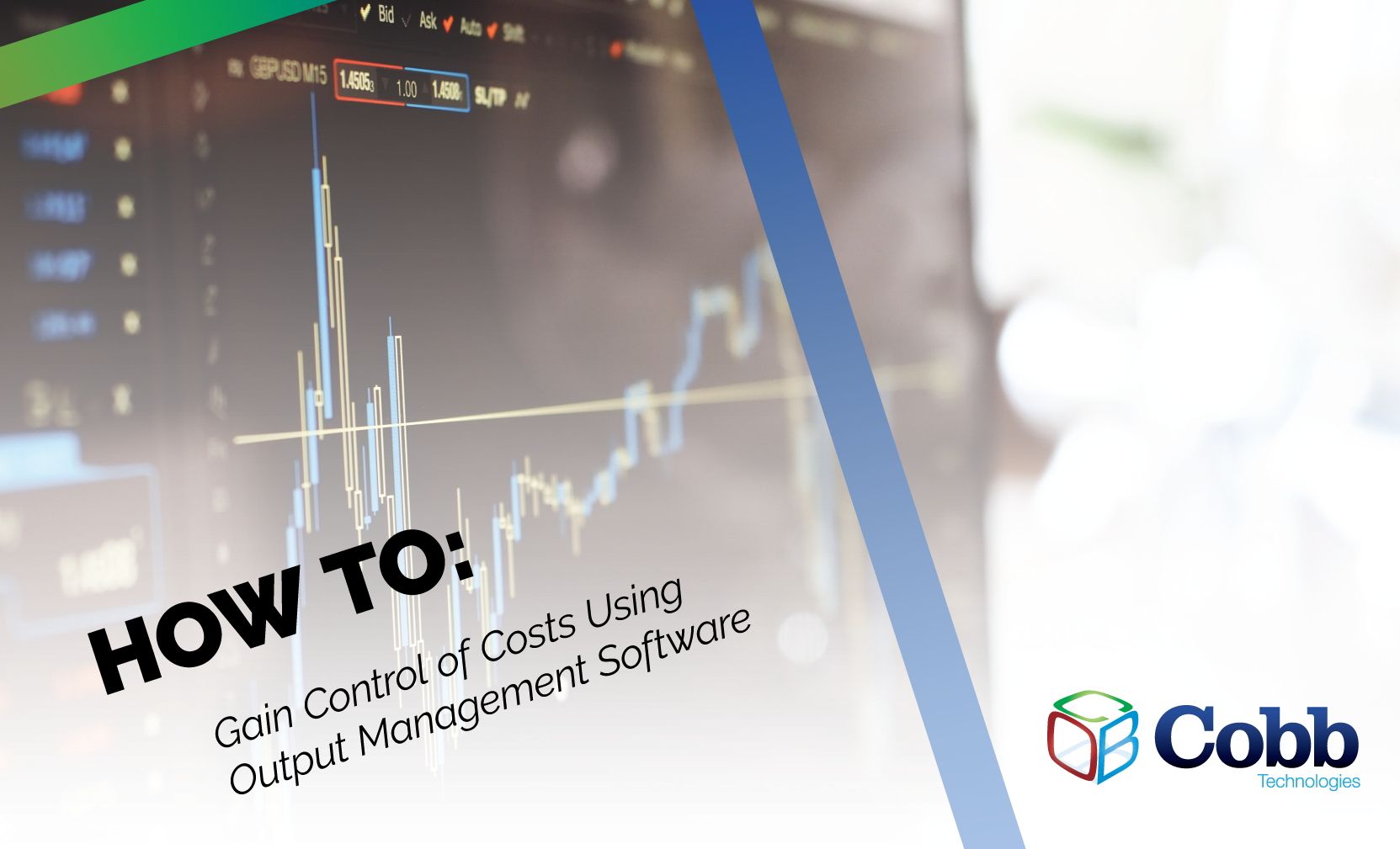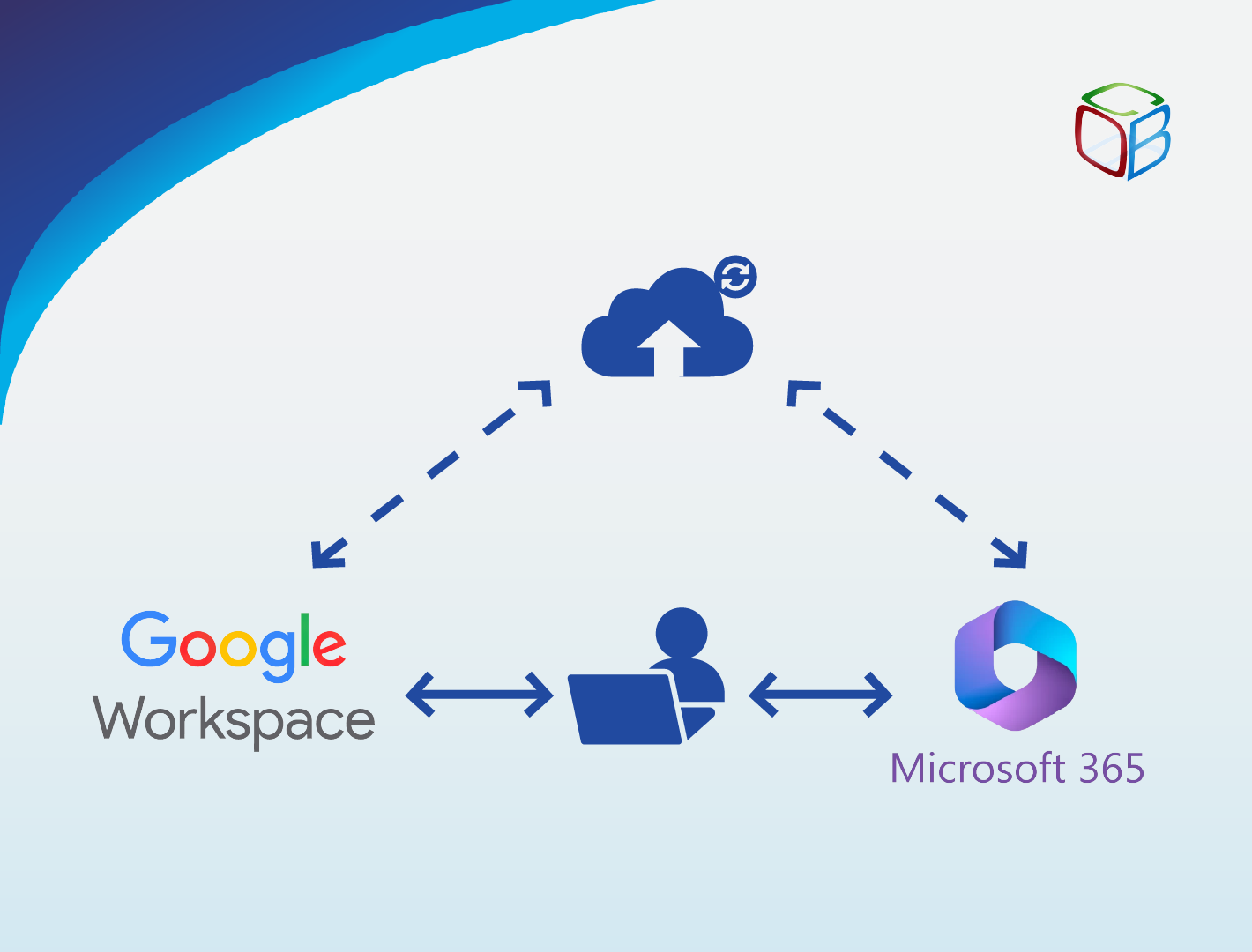12 min read
Is your business more suited for Microsoft 365 or Google Workspace?
Choosing the right cloud productivity suite is vital to shaping your company’s communication, collaboration, and workflow efficiency. Today, the top...
3 min read
 Kaitlin McDonnell
Mar 24, 2022 1:21:44 PM
Kaitlin McDonnell
Mar 24, 2022 1:21:44 PM

There’s an adage that perfectly encapsulates why output management software is important: you can’t manage what you can’t measure. And if you can’t manage something, you can’t control how much it costs, and you leave a portion of your organization’s budget to chance.
After real estate and payroll, print is the third highest controllable cost for businesses. Think about that — the cost of printing documents outweighs your insurance, your office’s utilities, the bills from vendors for office coffee…
And, for the majority of organizations, if you were to ask the question, “How much do you spend on print?,” the answer would be “we don’t know.”
This is a problem. And as an independent copier dealer who has offered services and supplies for over thirty years, we’ve heard that answer more times than we can count. And while it is a problem, it’s not the fault of the organization that can’t measure what, how, and why they’re printing.
Manually reviewing a printer’s usage is not simple — you either have to do it yourself using the UI embedded on your copier, or place a call to your copier’s provider, and request that they pull the numbers for you. However, the numbers you’ll receive will only tell a fraction of the story.
It honestly doesn’t matter if you know how many pages a copier printed in the past month. That single data point doesn’t tell you who printed, what was printed, why it was printed, how it was printed, or when it was printed.
This is where output management software comes in.
Before you even begin shopping for output management software, it’s a good idea to conduct a print study first. To do so, you’ll need the help of your current provider, so they can analyze the usage of your printer fleet.
A print study should look at the following metrics and data for each copier or printer that is in your office:
Collecting this data before you actually implement output management software will help give you an idea of what your new software will need to accomplish. For example, if you have found through your print study that one copier is used for the majority of scans, and another is used for the majority of printing, you may want to switch their locations periodically, to prevent parts being exposed to overuse.
Like any complex machine, the parts of a copier wear out with use — so if the scan tray of a copier sees three times the usage when compared to the actual printer, the scanning rollers will need to be replaced much sooner than the printing drum.
When conducting your print study, make sure to collect data on all of your networked printers — even if an employee has a personal printer on their desk. Small, ink-based printers often boast very high operating costs, oftentimes coming in at three or four times the cost of operating a standard office copier. Getting a full understanding of how much your printer fleet costs every month is essential for forming a game plan to roll out your output management software.
Below, you’ll find a few examples of common situations we’ve found after conducting a print study at a client’s office or offices:
Once you have identified trouble areas in your printer fleet, you can begin to set rules, and manage the copiers themselves to help remedy wastage. You may find yourself surprised by how many copies of a single file are printed by a single employee, or how much full-color toner prints your HR department creates every month.
Output management software provides you with options to affect copiers globally, like automatically duplexing multi-page documents, or specifically, like creating a prompt that appears on a print driver asking if the employee does indeed intend to print a full-color document.
By setting these rules and permissions both across your entire organization, and for specific departments, you can begin to curtail bad printing behavior.
Another huge benefit to using output management software is you can track who is printing, what they are printing, how they are printing, and when they are printing, all without necessitating the employee enter in a PIN or department code before using the printer. The output management software can simply look at which device is sending the print job to the copier, and can therefore identify the employee who is printing.
This data will be automatically aggregated into an easy-to-view report each month, or can be viewed at any time you would like to do so. This will give you a clear picture of the health and usage of all of your copiers and prints, allowing you to identify any new usage patterns that may arise in your print fleet.
There’s a lot that output management software can do for your organization — but the best way to discover how it can impact your bottom line is to conduct a print study of your own. If you’d like us to conduct a print study so you can find out how much you spend on print every month, reach out to us here.

12 min read
Choosing the right cloud productivity suite is vital to shaping your company’s communication, collaboration, and workflow efficiency. Today, the top...

3 min read
Cobb Technologies has been honored as one of the 2025 Best Places to Work in Virginia by Virginia Business and Best Companies Group. This prestigious...

5 min read
Cobb Technologies is honored to hold the SWaM (Small, Women-owned, and Minority-owned Business) certification, awarded by the Commonwealth of...